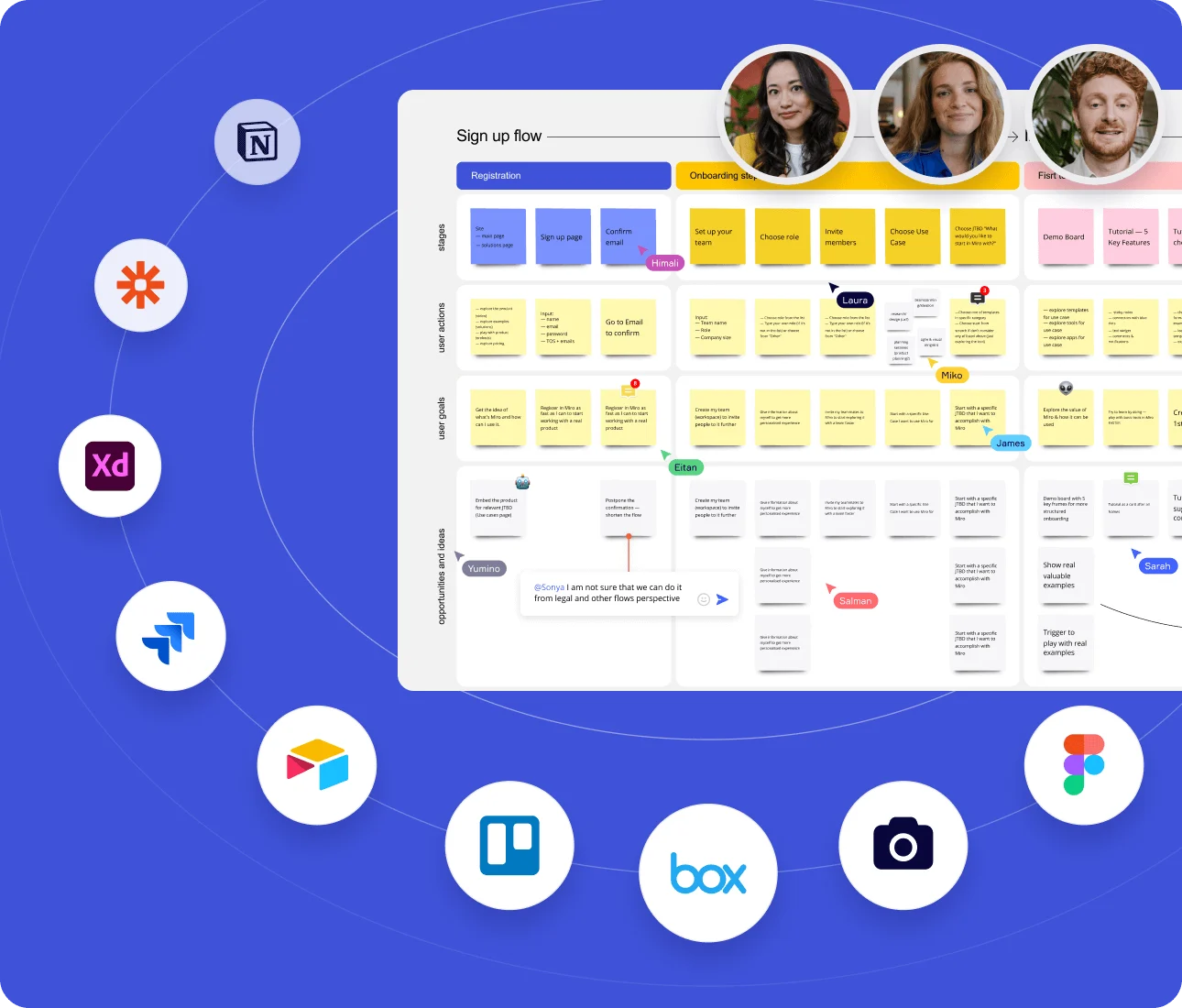
What is a culture of innovation? A quick guide

Summary
In this guide, you will learn:
What a culture of innovation means: fostering an environment where creativity and new ideas are encouraged and supported across the organization.
The importance of a shared sense of purpose as a foundational element that drives innovation velocity and aligns teams toward common goals.
How collaboration and transparency in project management contribute to sustaining innovation by enabling efficient idea sharing and execution.
The role of flexible, visual collaboration tools like Miro in creating a central workspace that supports brainstorming, prototyping, and cross-functional teamwork.
Practical steps to build and maintain an innovative culture, including creating shared workspaces and encouraging open communication without restrictions.
How innovation is a human-centered process that requires bringing people together to transform creativity into tangible outcomes, not just relying on technology.
What is a culture of innovation?
In a rapidly evolving business landscape, the demand for innovation is higher than ever. At its core, innovation means creating new value by tackling challenges and seizing opportunities in unique ways. A culture of innovation is an organizational environment that not only encourages but also nurtures and sustains such novel approaches. It is a milieu where fresh ideas, divergent thinking, and inventive problem-solving are integral to everyday operations and strategic thinking. But what does this culture look like, and how does it function?
How does a culture of innovation work?
A culture of innovation is characterized by openness, collaboration, and a healthy appetite for risk. It's not merely about producing a stream of new ideas but having the right structures, systems, and processes in place to bring these ideas to fruition. It's an environment that acknowledges failure is often a stepping stone to success, so taking measured risks is encouraged and embraced.
In an innovative culture, diversity is celebrated - diversity of thought, experiences, skills, and backgrounds. Diverse teams bring a broader perspective to the table, sparking creativity and leading to more robust and innovative solutions. Moreover, such a culture values continuous learning and growth. It empowers people and teams to explore, experiment, learn, and adapt, fostering an ongoing improvement and innovation ecosystem.
Operating models for innovating in the workplace
Organizations can adopt different operating models to foster a culture of innovation, each with unique mechanisms for driving creativity and value generation.
Innovation Labs: Some organizations create dedicated spaces or labs where employees can brainstorm, experiment, and test new ideas. These labs serve as safe spaces for risk-taking and often employ techniques like design thinking, Agile methodologies, or Lean Startup principles to stimulate and shape the innovation process.
Cross-functional teams: These are diverse teams that bring together employees from different departments and roles to collaborate on innovative projects. These teams, often project-based, are designed to break down silos and harness the power of varied experiences, knowledge, and skills.
Intrapreneurship: Akin to entrepreneurship, intrapreneurship encourages employees within an organization to take ownership of their ideas and act like entrepreneurs, albeit within the company structure. This model fosters a sense of ownership, allowing for autonomy and encouraging creativity.
Open innovation: This model involves harnessing ideas from within the organization and external sources - customers, partners, academia, etc. Open innovation acknowledges that valuable ideas can come from anywhere and seeks to create channels to tap into this broader ecosystem of creativity.
How to foster an innovative culture — best practices
Fostering an innovative culture requires a conscious and concerted effort. Here are some best practices gleaned from successful SaaS companies that have built thriving cultures of innovation:
Leadership commitment: Leadership plays a critical role in shaping a culture of innovation. Leaders set the tone, modeling behaviors like openness to new ideas, willingness to take risks, and acceptance of failure as a learning opportunity. They also need to invest in creating the right environment, processes, and resources that enable innovation.
Employee empowerment: Employees at all levels should be encouraged and empowered to contribute ideas. This could mean creating channels for idea submission, offering time and resources for innovation projects, or embedding innovation into roles and performance metrics.
Adopting Agile practices: Many innovative SaaS companies use Agile methodologies emphasizing iterative development, regular customer feedback, and a willingness to adapt and pivot. Agile practices can stimulate innovation by breaking down silos, accelerating learning, and fostering a responsive, customer-centric approach.
Leveraging technology: Technology, like Miro's collaborative workspace, can be pivotal in enabling innovation. Such tools can facilitate brainstorming, collaboration, and the seamless exchange of ideas, regardless of location, so overcoming traditional barriers to innovation.
Rewarding innovation: Rewarding and recognizing innovation encourages more. This could include acknowledging the effort, not just the outcome, and celebrating both successes and 'honorable failures' – attempts at innovation that didn't succeed but provided valuable learnings.
A culture of innovation isn't a luxury — it's necessary for any organization aiming to thrive in today's dynamic, competitive, and digitally-driven business landscape. By understanding how a culture of innovation works and implementing the right operating models and best practices, organizations can spark creativity, drive growth, and build an environment where innovation thrives.
Author: Miro Team Last update: August 12, 2025